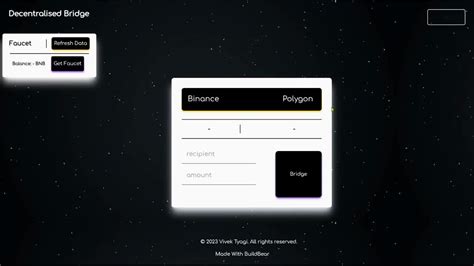Title: “Bullish on Blockchain: Decentralized and Crosschain Bridges the Gap to Unprecedented Levels of Interoperability and Value”
Introduction
The world of cryptocurrency has been on a rollercoaster ride lately, with prices fluctuating wildly and investors eagerly awaiting the next big move. While some have questioned the viability of decentralized finance (DeFi) and crosschain bridges, others see them as game-changers that can unlock unprecedented levels of interoperability and value. In this article, we’ll delve into the world of crypto bullishness, specifically focusing on decentralized and crosschain bridges, and explore why they’re poised to become key players in the cryptocurrency ecosystem.
Decentralized Bridges: The Rise of Crosschain
Crosschain bridges have been gaining traction in recent years, with companies like Aave, Uniswap, and Sui offering robust solutions for bridging different blockchain networks. These bridges enable seamless interaction between DeFi protocols on separate blockchain platforms, allowing users to transfer assets, liquidity pools, and even entire wallets across chains.
Decentralized Bridges: Why They Matter
There are several reasons why decentralized bridges have become a hot topic in the crypto space:
- Interoperability: Crosschain bridges enable users to interact with assets from different blockchain networks without needing intermediaries or centralized exchanges.
- Increased Liquidity: By providing access to liquidity pools on multiple chains, decentralized bridges can increase liquidity and reduce costs associated with crosschain transactions.
- Improved Security: Decentralized bridges often employ robust security protocols, including multi-signature wallets, cold storage, and smart contract-based encryption.
- Reduced Fees: Crosschain transactions typically incur lower fees compared to traditional centralized exchanges or interchain bridges.
Decentralized Bridges: Success Stories
Some notable examples of successful decentralized bridges include:
- Aave: A leading DeFi protocol that offers crosschain lending, borrowing, and yield farming services.
- Uniswap: A popular decentralized exchange (DEX) that enables seamless interaction between different blockchain networks.
- Sui: A crosschain bridge that allows users to transfer assets from Ethereum (ETH) to Binance Smart Chain (BSC) without the need for intermediaries.
Why Decentralized Bridges Will Continue to Bullish
Despite the challenges faced by traditional centralized exchanges, decentralized bridges are poised to continue bullish in several ways:
- Growing Demand: As more users become comfortable with crosschain interactions and DeFi protocols, demand for decentralized bridges will increase.
- Regulatory Clarity: Governments and regulatory bodies are starting to take notice of blockchain and cryptocurrency, leading to increased support for decentralized solutions.
- Technological Advancements: Rapid advancements in technology, including blockchain scalability solutions and smart contract-based encryption, will further enhance the usability and value proposition of decentralized bridges.
Conclusion
In conclusion, decentralized bridges offer a compelling opportunity for crypto bullishness, providing unparalleled interoperability, increased liquidity, improved security, and reduced fees. As regulatory clarity emerges and technological advancements accelerate, it’s likely that we’ll see a surge in demand for crosschain solutions like decentralized bridges. Whether you’re an early adopter or a seasoned investor, now is the perfect time to get involved and experience the future of blockchain.
Disclaimer:

This article should not be considered as investment advice.
